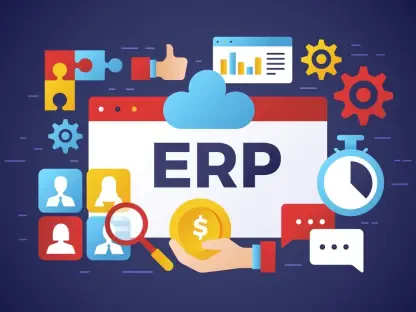In today’s fast-paced digital landscape, businesses face a staggering array of choices when it comes to selecting the right technology to drive their operations, and a critical decision looms large: whether to adopt Software as a Service (SaaS) solutions, which promise quick deployment and affordability, or to invest in custom software, tailored precisely to unique organizational needs. This choice impacts not just budgets but also long-term scalability, control over data, and competitive edge. With technology spending projected to grow significantly in the coming years, understanding the nuances of each option becomes paramount for companies aiming to stay agile and innovative. This comparison dives deep into the core differences between SaaS and custom software, unpacking their strengths, limitations, and strategic implications to guide businesses through this pivotal decision.
Understanding SaaS and Custom Software: Foundations and Relevance
Software as a Service, or SaaS, refers to cloud-based applications delivered over the internet on a subscription basis, allowing users to access ready-made tools without the burden of managing infrastructure. Think of platforms like Salesforce or Google Workspace, where functionality is standardized and accessible with minimal setup. On the other hand, custom software involves bespoke development, crafted from the ground up to address specific business challenges, often by in-house teams or contracted developers. This approach results in unique systems designed to fit exact workflows, such as proprietary inventory management tools for a retail chain.
The relevance of both models in modern business cannot be overstated. SaaS provides an off-the-shelf solution, ideal for organizations seeking speed and cost-efficiency, particularly startups or small enterprises with limited technical resources. Custom software, by contrast, caters to firms requiring specialized functionality or deep integration with existing systems, often preferred by larger corporations or those in regulated industries. Each serves distinct purposes, shaping how companies operate in an era where digital transformation is non-negotiable.
Their application spans diverse industries, from tech startups leveraging SaaS for rapid scaling to healthcare providers relying on custom solutions for compliance with strict data regulations. While SaaS democratizes access to advanced tools across sectors, custom software empowers businesses to carve out unique advantages in competitive markets. This foundation sets the stage for a detailed exploration of how these two approaches stack up against each other in critical areas of business decision-making.
Key Comparisons: SaaS vs. Custom Software
Cost Structure and Financial Impact
When evaluating SaaS and custom software, financial considerations often take center stage. SaaS operates on a subscription model, typically involving low upfront costs and predictable monthly or annual fees. This structure allows businesses to avoid hefty initial investments, making it attractive for smaller firms or those testing new tools. However, costs can accumulate over time, especially as organizations scale and require premium features or additional user licenses.
Custom software, in contrast, demands a significant initial outlay for design, development, and deployment, often running into substantial figures depending on project complexity. Yet, once built, the expense per user tends to decrease as the system scales, offering potential long-term savings for larger enterprises. For instance, a custom solution for a multinational corporation might prove more economical over a decade compared to escalating SaaS subscription fees for thousands of employees.
The financial impact also hinges on hidden costs. SaaS may involve expenses tied to integration or customization add-ons, while custom software carries ongoing maintenance and update costs. Businesses must weigh these factors against their budget constraints and growth projections to determine which model aligns with their fiscal strategy, recognizing that short-term affordability with SaaS might trade off against long-term value with custom builds.
Control, Customization, and Flexibility
Another critical dimension of comparison lies in the degree of control and customization each option affords. SaaS solutions, by design, offer limited personalization, as they cater to a broad user base with standardized features. Users must often adapt their processes to fit the platform, and they remain at the mercy of vendor decisions, such as unannounced updates that might disrupt workflows or integrations. Vendor lock-in further complicates flexibility, as migrating data to another provider can be cumbersome.
Custom software stands out for its ability to provide full control over every aspect of the system. Organizations can dictate functionality, user interfaces, and integration with legacy systems, ensuring a perfect fit for specific needs. This bespoke nature allows for proprietary features that competitors using off-the-shelf tools cannot replicate, fostering a distinct market advantage. Additionally, updates and modifications can be scheduled according to internal priorities rather than an external provider’s timeline.
Flexibility also plays a pivotal role in this contrast. While SaaS might suffice for generic tasks, it often falls short when unique requirements emerge, potentially forcing businesses to seek costly workarounds. Custom software, though resource-intensive to adapt initially, offers agility in responding to evolving demands, making it a strategic choice for firms with complex or dynamic operational needs.
Deployment Speed and Scalability
The speed of implementation marks a significant difference between these two approaches. SaaS solutions excel in rapid deployment, often requiring little more than signing up and configuring basic settings to get started. This immediacy proves invaluable for businesses needing quick solutions, such as a startup launching a customer relationship management system overnight. Scalability in SaaS is equally straightforward, with subscription plans easily adjusted to accommodate growth or downsizing as needed.
Custom software, however, entails a much longer timeline, as development can span months or even years depending on the project scope. From planning and coding to testing and rollout, each phase demands careful execution, delaying the realization of benefits. Yet, when it comes to scalability, custom solutions can be engineered to handle massive growth with precision, tailored to an organization’s exact capacity needs without the incremental cost spikes often seen in SaaS models.
Real-world scenarios highlight these trade-offs vividly. A small e-commerce business might prioritize SaaS for its speed in setting up payment processing tools, while a global logistics firm may opt for custom software to manage intricate supply chain demands over the long haul. Decision-makers must assess whether immediate functionality or sustained, tailored growth holds greater weight in their strategic planning.
Challenges and Limitations of Each Approach
SaaS, despite its accessibility, comes with notable drawbacks that can hinder long-term success. Limited control over updates means businesses must adapt to changes imposed by vendors, which can disrupt operations or integrations without warning. Security risks also loom large, as storing sensitive data with third-party providers raises concerns about breaches, even with robust safeguards in place. Furthermore, dependency on a single vendor can create challenges if service quality declines or if switching providers becomes necessary.
Custom software presents its own set of hurdles, primarily centered around resource demands. The high upfront costs can strain budgets, particularly for smaller organizations unable to absorb significant initial investments. Development timelines are often protracted, delaying benefits and requiring patience through iterative testing phases. Additionally, ongoing maintenance falls squarely on the business, necessitating dedicated technical staff to handle updates, bug fixes, and system optimizations over time.
These limitations impact organizations differently based on their size and priorities. A startup might find SaaS constraints manageable given tight budgets, while struggling with the financial burden of custom development. Conversely, a large enterprise in a regulated sector may view custom software’s challenges as a worthwhile trade-off for compliance and control, despite the resource intensity. Balancing these drawbacks against strategic goals remains essential in navigating the choice.
Making the Right Choice: Strategic Insights and Future Trends
Navigating the decision between SaaS and custom software requires a careful alignment of business objectives with the strengths of each model. SaaS emerges as a strong contender for startups or small businesses with standard needs, offering affordability and speed to market. Custom software, however, suits organizations with unique processes or stringent regulatory demands, providing unmatched control and long-term scalability. For many, a hybrid approach—combining SaaS for routine tasks and custom solutions for core, differentiating functions—offers a balanced path forward.
Emerging trends further shape this landscape, particularly the integration of artificial intelligence into SaaS platforms. Tools like Salesforce with AI-driven analytics or Notion with content generation capabilities are narrowing the gap with custom software by offering advanced personalization and automation. This evolution suggests that SaaS may increasingly cater to specialized needs without the overhead of bespoke development, influencing how businesses evaluate their options in the coming years.
Strategic insight lies in assessing specific constraints and goals. Companies must consider not just immediate needs but also growth trajectories over the next few years, ensuring their chosen solution supports both current operations and future ambitions. Whether prioritizing cost, control, or speed, the decision should reflect a deep understanding of how technology can drive competitive advantage in an ever-evolving digital environment.
In reflecting on this comparative analysis, businesses found clarity in aligning their technology choices with actionable strategies that supported growth. The journey didn’t end with choosing between SaaS or custom software; instead, it prompted a deeper evaluation of how to integrate these tools into a cohesive ecosystem. Moving forward, organizations were encouraged to regularly reassess their needs, explore hybrid models for flexibility, and stay attuned to innovations like AI enhancements that could redefine efficiency. By fostering a mindset of adaptability, companies positioned themselves to navigate future challenges with confidence, ensuring their technology stack remained a catalyst for success.









